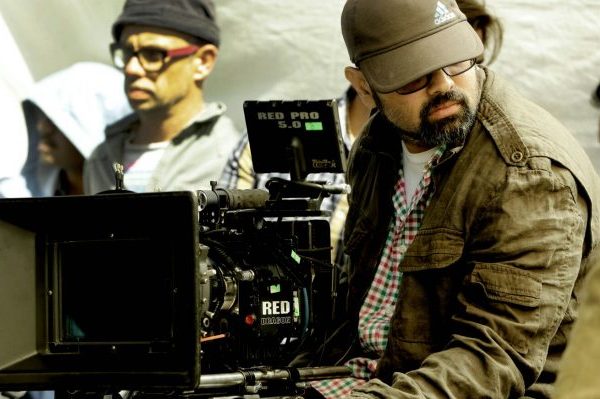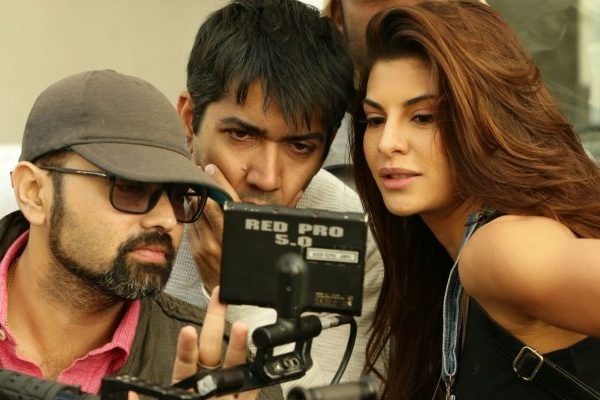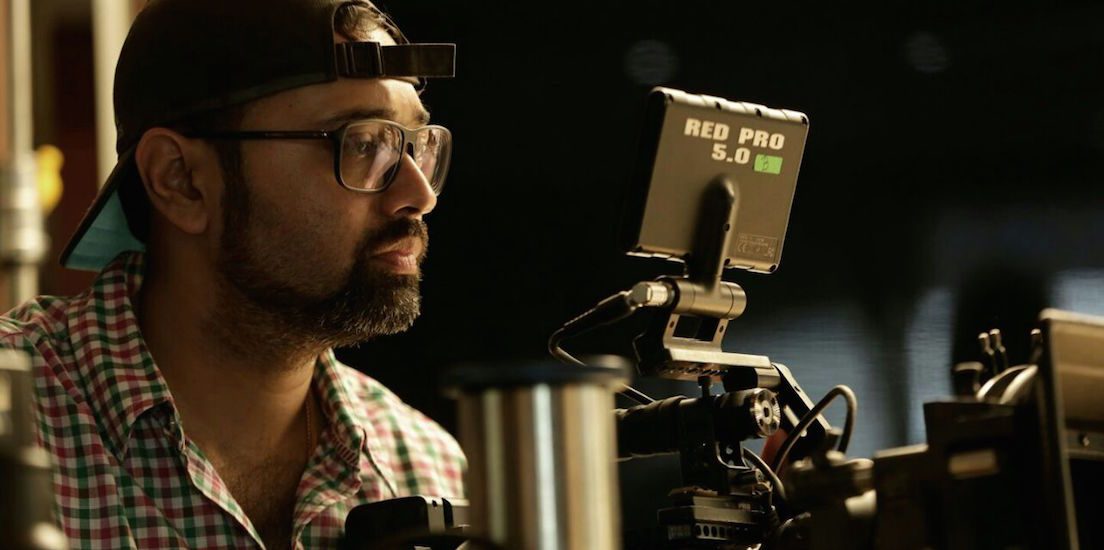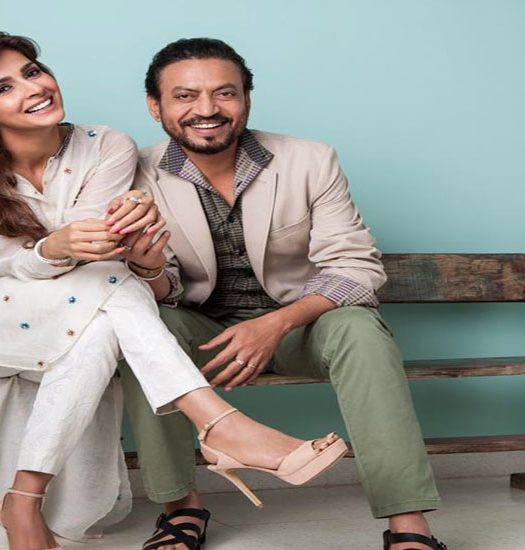Dishoom has a good mix of grunge and glamour – Ayananka Bose
Observing art is a process of learning for Ayananka Bose. The cinematographer, who loves visiting art galleries, doesn’t watch too many films and that makes his vision instinctive and unique. Ahead of the release of his latest film, the action adventure Dishoom, Bose talks about his camaraderie with director Rohit Dhawan, influence of paintings in his art and how shooting Dishoom was an organic process.

Ayananka Bose
Dishoom is Rohit Dhawan’s second film. What is the best thing about working with a young and relatively new director?
Rohit directed Desi Boys four years ago. Though in his energy and approach (for Dishoom), I think he behaved as if this was his first time ever and perhaps that is the best thing about him. The nervous energy, that fire and the uncertainty that one feels while executing the film is an amazing feeling. As a first time director that path of discovery is always exhilarating more than ever.
WATCH: DISHOOM | OFFICIAL TRAILER
When you get a film, how do you first approach it, is there a process you follow before going on shoot?
I have never chosen films to be honest. I always allow my films to choose me. I am a firm believer in the fact that there is some energy out there that makes a certain film or project come towards you. Then who am I to say no?
Once the film is finalized the process is rather simple. As a storyteller, and second in command to the director, one has to immerse oneself completely in seeing the film in the way that the director sees it. Now comes in the instinct and the experience to guide the film exactly on to that path. So when I place a camera, it is with the essential knowledge that the shot is eventually going to be a part of the jigsaw puzzle, that fits perfectly with the other shots to make a complete picture.
When I operate on an action sequence, I feel the moment and I know that my hands on the camera and zoom are an extension of that
When you are preparing for a project do you use inspiration from other films of the same genre? Were there any references for this one either from the director or your own references?
I don’t generally watch many films. So I am open to interpretation of how I see it (a project) instinctively. I always wanted to be an artist but my skills with a brush and pen are zero (laughs). But that never stopped me from observing paintings. Even now, on my day off, you will find me loitering at art galleries. I just love seeing art. It’s a process of learning for me. Having said that, the director is a big fan of Tony Scott and wanted me to see some of his films as a broad outline of his personal taste and inclinations. And I too love Tony Scott. So we both ended up watching some films together over some fun afternoons. And that was it! Prepped and ready. So to summarize, with Dishoom it was just organic and we found our way on set for the various scenes as far as the look of the film is concerned.
How different was the treatment and approach to shooting Dishoom as compared to your previous action films like Force and Kick?
Force and Kick have a lot of “camera energy”, as I call it. Meaning, when I operate on an action sequence I feel the moment and I know that my hands on the camera and zoom are an extension of that. The camera moves according to the energy that I feel in the viewfinder. However with Dishoom, it took me some time to settle in during the action. Rohit would constantly want a camera pretty much close to being locked off, “classic” he would call it. And that is very difficult when my hands are itching based on the energy of the action. I would sometimes even do one take with the “camera energy” and Rohit would say, “Bose let’s be more “classic” on this action”. So that took some time not only for me, but also my camera operating team that handled the second, third or fourth camera.
READ: WHEN ACTION IS STORY-DRIVEN, IT IS DEFINITELY ENGAGING – SHAM KAUSHAL

With director Rohit Dhawan and Jacqueline Fernandez
Which is your favorite camera to work with? Which one was chosen for Dishoom and why?
I have always been a fan of the Red camera set up. This film has a Red Dragon running at 6k. It’s a small and versatile camera hence makes it best for films where there are a lot of handheld or running shots. I also like the way I can add my LUT to the camera file so the offline editor gets to edit with the look already pretty close to the way I intended it. It makes the grading process simpler in the end. So it makes complete sense for me to stick to my favorite.
I have always been a fan of reaching a location and letting the location speak to me
What was the camera setup like? Particularly, how have the action sequences been shot?
Everyday we would have two cameras and a normal set of lenses. For action days we would have around two more cameras and two more zooms. But otherwise there were the usual suspects peppered through the film meaning Steadicam used by Kapil Verma and Sunil Khandarpur who many a times also doubled up as second operators, Suresh and Sagar on Jimmy Jib, Prakash Katke on the Dolly. Dharmendra Bhurji came in along with Harry from Dubai on the various rigs. My regular team has my gaffer Ahmad, Madhav on focus and my first assistant Siddhant. The names above are pretty much amongst the best technical people in India. It’s a boon to have them by your side. A mention is a must for DOP Priya Seth (of Airlift fame) who shot the underwater sequence in the film !
The only additional gear used here were a pair of flight heads, very advanced stabilizing remote heads, during the speed boat sequence and the chopper sequence of the film. It was amazing to capture shots with them.
READ: JUST WANT THE PRODUCER TO MAKE MONEY & AUDIENCE TO HAVE FUN – TUSHAR HIRANANDANI
The film is shot and based in Middle East. How did the locations affect the use of lenses and colours in the film?
I have always been a fan of reaching a location and letting the location speak to me. So to reach a place and feel the place according to the needs of the story gives you a path to follow. In the Middle East one has always witnessed heat, so I have allowed heat to be an integral part of the film. Though I must confess lensing cannot be affected by locations. My lensing is based on the story and the needs of the scene. I just find a way to integrate the location into the story as seamlessly as possible doing justice to both the story and location.

During the shoot in Dubai
Was it more of an indoor or outdoor shoot? What was the lighting design and kind of lights adopted for indoor scenes and outdoor scenes respectively?
This film has tried to be a good mix of grunge and glamour. I love lighting faces personally. And the location has to come across with a bit of grunge. So the lighting has tried to achieve that mix as much as possible.
To your answer your question on what kind of lights were adopted, I would say nothing that is not normal and used by any of my other contemporaries. I would compare it to a painting. As with any painter, you have the same tools as any one else. It’s your vision of how you eventually paint it. After all at the end of the day we are all painters. We paint with light!
The film also has a number of songs. How differently are the songs treated in terms of color, lighting and framing as compared to the action and other sequences?
This film has just three songs. It’s a fast paced film where there is no space for any songs inherently except one. This was Sau tarah ke and according to the story it was in a cave, underground, grunge kind of a setting. I allowed the location to determine my lighting. I just assumed that such a place may have a lot of fire torches and that was the lighting design for the whole song. The other song was the beginning credit of the film Toh Dishoom. Unfortunately due to a sickness in the family I haven’t shot this song. The end credit song Janeman aah was again like a bubblegum gloss kind of a song but we had to pull it off in just one day. So it has been shot in what was best possible in one day!
At the end of the day we are all painters. We paint with light!
What was the most difficult shot that you achieved in this action-adventure film? And how did you go about it?
When I sit back and think there is probably nothing that was difficult. It was excellent planning and good teamwork between all departments!
READ: TECHNIQUES TO SHOOT AN ACTION SEQUENCE WITH A CHASE
What kind of VFX does this film employ?
A film of this scale and size has a lot of VFX that comes along with it. It involves multiplication, building, clean ups and the whole works. Prime Focus has been given the job and with the given time scale, they have done a great job. Rajeev Rajashekaran was spearheading this project from start to finish and I wish him the best for the future knowing too well how good he has done this one.



